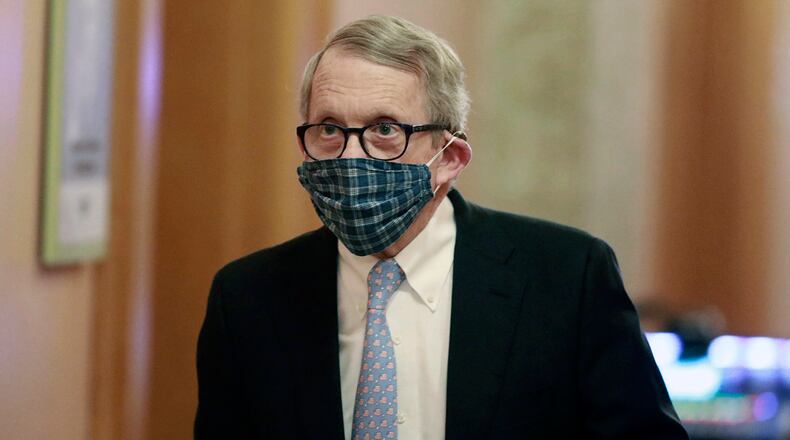If the state can get hospitalizations under 3,000 for seven straight days, it will be adjusted to midnight to 5 a.m. Once hospitalizations are below 2,500 patients for a week, no curfew will be in place.
For the last six days Ohio has had fewer than 3,500 COVID-19 patients hospitalized, according to the state health department. Tuesday Ohio was also fewer than 3,000 hospitalized patients.
DeWine noted that it’s still important to follow health guidelines if the curfew is adjusted, especially with concerns about a more contagious variant.
“Our case numbers are improving because of what you are doing -- and what you’re not doing,” he said. “More people are wearing masks. Please continue wearing masks.”
He added that if hospitalizations start to increase again, a curfew could be reinstated.
The curfew went into effect on Nov. 19 and initially was scheduled to last 21 days. However, after cases and hospitalizations surged in November and through early December, DeWine opted to expand the curfew.
Last week it was extended again and is now scheduled to last through Jan. 30.
Coronavirus vaccinations for K-12 school staff will begin this week in Cincinnati, with Ohio aiming to administer the first dose of the vaccine to all school personnel who want it by the end of February, DeWine said.
Districts scheduled to receive the vaccine next week have already been notified. The remaining districts will be contacted by Friday and a time and date for vaccinations will be set up.
The vaccinations will mainly be distributed in closed clinics so staff will not have to compete with the general public. The governor hopes that by expanding vaccines to school staff, most districts will back to in-person or hybrid learning by March 1.
More coronavirus vaccines are expected to be available to older Ohioans as the state wraps up Phase 1A, DeWine said.
On average, the state is receiving 146,000 first doses each week. With Phase 1A finishing up, about 110,000 to 120,000 vaccines will be available to those eligible in Phase 1B.
DeWine also said that another 77,000 doses will be available in the next two weeks because the state isn’t drawing down all the vaccines required to be set aside for nursing homes in the federal vaccination program.
Starting Feb. 8, the state will bring vaccines to affordable senior housing locations in an effort to distribute the vaccines to Ohioans of different backgrounds.
“Our team is concentrating efforts to get these residents vaccinated and is working with local partners to offer assistance through onsite clinics,” DeWine said. “These clinics will help ease the burden for many seniors having trouble with the registration process and arranging transportation.”
Ahead of the clinics, there will be an onsite resource guide with information on vaccine, when the clinics will be available and a sign up sheet for those who are interested.
The governor also said his office is working to set up town halls, create a vaccine toolkit for partners and other educations strategies to reach minority communities and address vaccine hesitancy.
Ohio recorded fewer than 5,000 daily cases of coronavirus for the third day in a row and the fourth day in a week, according to the Ohio Department of Health.
The 4,262 cases reported Tuesday is the lowest number of cases reported in the last three weeks.
Throughout the pandemic, there have been 872,918 total cases reported.
Hospitalizations increased by 295 for a total of 45,276. It’s nearly 100 more than the 198 hospitalizations recorded on Monday and the 98 reported Sunday.
However, the total number of patients hospitalized with COVID-19 in Ohio decreased to 2,964 on Tuesday. It’s the first time ODH has reported fewer than 3,000 hospitalized patients in at least two weeks.
In southwest Ohio hospitals, coronavirus patients dropped to 824, also a two-week low. The region had 208 patients in ICUs and 176 on ventilators.
Throughout the pandemic, there have been 6,600 COVID-19 patients admitted to ICUs in Ohio.
The state also reported 88 deaths on Tuesday, bringing the total to 10,856,
About the Author

